My evolving views on global warming
by John M. Wallace
John M. (Mike) Wallace is professor emeritus, Department of Atmospheric and Climate Science, University of Washington. He is a “giant” in climate science, a member of the National Academy of Sciences, and the recipient of a range of science awards. He is known by fellow scientists, and the media outlets covering them, as a long-time straight shooter. We are pleased to repost, with Mike’s permission, this exchange with veteran journalist and author Andrew Revkin, prepared for Revkin’s own Substack. Mike discusses the evolution over a half century of his view of climate change. It is a lesson in the way science progresses, from hypothesis and healthy skepticism to understanding through the amassing of evidence and improved analysis.
This essay is an outgrowth of my involvement in the scientific community’s response to the recent report of the Department of Energy’s Climate Working Group. In the Foreword, Secretary Chris Wright notes, “What I’ve found is that media coverage often distorts the science. Many people walk away with a view of climate change that is exaggerated or incomplete.” I agree, and I’d have responded positively if the Secretary had called upon me to help restore a sense of balance. Here’s my take on it.
My first encounter with the concept of human induced climate change occurred when I was a graduate student at MIT (1962-66), home for a weekend with my parents. My father, who was in the insurance business, spent many of his working hours dealing with fire and flood risks and losses. Based on what he had been hearing in the news media, he had become half-convinced that the Soviet and American H-bomb testing at that time was adversely affecting our weather, and he wanted to know what I thought. That nuclear explosions might influence the weather was not a new idea.
Back in 1953, the US Congress called upon government witnesses to explain the causal linkage between an underground nuclear weapons test in Nevada and devastating tornadoes that struck Flint Michigan and Worcester, Massachusetts a few days later.1 Contrary to the expectations of the senators, the experts repeatedly denied the possibility that the tornadoes could have been human induced, arguing that the energy released by the explosion was “puny, in comparison to the awesome powers of nature”. (McBrien, 2019) A decade later, I invoked the same energetics argument in conversations with my father, (but to no avail).
In my studies at MIT I learned that there was, in fact, a way in which human activity could conceivably be changing our weather. In 1896, the Swedish physicist / chemist, Svante Arrhenius predicted that CO2 released by the combustion of fossil fuels would build up in the atmosphere and enhance the greenhouse effect, which renders the Earth warmer than it would be in the absence of an atmosphere by blocking2 some of the outgoing radiation emitted by the Earth’s surface — in effect, acting as a blanket. He estimated that the Earth would warm by almost 10° F in response to a doubling of the atmospheric CO2 concentration, but he had no idea of how long it would take for the concentration to build up to that level. To address this question, CO2 monitoring was instituted at the observatory on Mauna Loa in 1958. When I was in graduate school, the record was less than 10 years long.
Based on the observations available at that time, it was believed that global mean temperature had risen by about half a degree Fahrenheit since the beginning of the 20th century, but that it had leveled off around 1940. I don’t recall there being anything approaching a consensus as to why it had leveled off. I thought that both the warming and the leveling off were due to natural causes unrelated to the buildup of CO2 in the atmosphere.
Around 1970, during my early years as a faculty member at the University of Washington, I remember conversations with visiting scientist, J. Murray Mitchell, on sabbatical leave from NOAA, who foresaw that human induced global warming was going to become a big issue. I couldn’t understand why a scientist of his stature could get so taken up with this idea, given that the early 20th century global warming seemed so limited and had all but stopped 30 years ago. Mitchell had championed the idea, based on paleoclimatic evidence, that the emissions from large volcanic eruptions can cause significant cooling. This explanation did not appear to be applicable to the current situation, because the hiatus in the warming had not been marked by unusually large volcanic activity.
Not until well into the 1970s was it recognized that the lapse in the warming was probably due to the increasing concentrations of sulfate aerosols released by the combustion of coal, which renders the Earth more reflective of incoming solar energy.
In 1975, Wallace Broecker published a paper entitled, “Climatic change: Are we on the brink of a pronounced global warming?” in which he argued that the hiatus in the warming would, “within a decade or so, give way to a pronounced warming induced by carbon dioxide.” One of the cornerstones of Broecker’s argument was the 17 year-long Mauna Loa record, which revealed the inexorable rising trend in atmospheric CO2 concentrations.
[The Trump administration’s proposed budget would eliminate nearly all climate research and could shut down the Mauna Loa carbon dioxide monitoring project.]
That year Peter Hobbs and I were in the final stages of the writing our textbook, Atmosphere Science an Introductory Survey. By that time, I was well aware of the trend in CO2 but nevertheless, I chose to portray the Earth’s climate as unchanging. Fortunately, there were others in the field who appreciated its significance much more than I did. By the end of the decade, “climate change” and “global warming” had become household words. The historic Charney Report, issued by the US National Research Council in 1979, predicted that Earth would warm by between 3 and 8°F in response to a doubling of the atmospheric CO2 concentration and laid out a strategy for obtaining more refined estimates.
By 1988, the renewed warming that Broecker and others had been anticipating was clearly evident. On a hot, muggy day in June, James Hansen delivered a forceful testimony in Senate hearings in which he addressed the question of whether the greenhouse effect was already large enough to affect the probability of extreme events, such as the summer heat wave that was currently in progress. He concluded his assessment with the statement. “I believe that this change in the frequency of hot summers is large enough to be noticeable to the average person. So, we have already reached a point that the greenhouse effect is important. It may also have important implications other than for creature comforts.” I remember feeling that Hansen was premature, by at least a few decades, in sounding the alarm.
1988 was also the year in which the Intergovernmental Panel on Climate Change (IPCC) was established. I was invited to serve as a member, but I declined because I knew it would require a big time commitment. I felt that I was already spending too much time on the road while serving on national committees.
By the mid 1990s, the global mean temperature had risen enough to convince me that human induced global warming had resumed, and with something of a vengeance. However, I still couldn’t imagine that the impacts would become discernible (much less, serious) within my lifetime. In 1994, James Baker, who was then the NOAA administrator, arranged for a group of scientists to have breakfast with Vice President Al Gore. As I recall, at the meeting, Gore spoke about the disastrous flooding that had occurred along the Missouri and Mississippi rivers the previous year, linking it to El Niño, and in turn, linking the El Niño to global warming. I was taken aback by his simplistic explanation. There was the opportunity only for a very brief conversation with him at the meeting, so I drafted a follow-up letter, which contained the paragraph (lightly edited for clarity):
Over the past year or two, I have been impressed with how effectively the right wing has been able to capitalize upon even the slightest exaggerations of environmental threats, to support their contention that the entire environmental crisis is a hoax. They seem particularly keen to discredit the greenhouse warming hypothesis, partly because the stakes are so high and partly, I think, because they sense that this is the issue on which environmental advocates are most vulnerable. This vulnerability stems from the fact that (1) a convincing case cannot be made that the extreme events (like last year’s floods) that have been observed thus far are beyond the range of the natural variability of the climate system, and (2) most model-based warming scenarios do not predict enough warming, on average during summer in temperate latitudes, to seriously disrupt the quality of life until well into the 21st century…..
I never finished my letter to Gore. I can’t recall exactly why, but I think I must’ve become preoccupied with teaching or with research projects. I envisioned that vice presidents must have more important things to do than read letters from academics advising them on what they should and shouldn’t say, so my not finishing it would not be a great loss. I might have been wrong about that. In any case, this unfinished letter serves as a useful reference point in my evolving thinking about human-induced climate change. I was going to include an additional paragraph urging him not to make global warming the flagship of his environmental agenda for fear that it would weaken its appeal. I believed then, as I do now, that other critical issues such as the declining availability of fresh water, deteriorating topsoil, the loss of biodiversity, and the declining effectiveness of antibiotics also need to be addressed.
The two messages in the letter that I intended to send to Gore were recurring themes in my op-ed pieces and newspaper interviews over the course of the next 20 years. In an interview published in the Columbia Law Review (2009), I urged journalists to beware of creating false conflicts and to resist the temptation to overreach when discussing the link between global warming and extreme events. In an interview in the Seattle Times (2009), I recalled my encounter with vice president Gore. Inspired by the Rockstrom et al. (2009) article on planetary boundaries and by an extended visit to rural India, I wrote an op ed piece stressing the multiple facets of the impending global environmental crisis, published in EOS (2012).
In January 2014, the eastern United States experienced a widely publicized cold air outbreak. Some of my colleagues attributed the record-breaking cold temperatures to an exaggerated meandering of the wintertime polar vortex as it weakens under the influence of global warming. The news media seemed captivated by the idea that global warming could lead to extreme cold, as in the plot of the box office hit, The Day After Tomorrow. Out of concern that the publicity generated by this story would be exploited by global warming critics, I co-authored a letter published in Science (2014), in which we argued that the cold wave was most likely a manifestation of natural variability, not global warming. The controversy is nicely summed up in the article in the Washington Post (2014) entitled, “Scientists: Don’t make ‘extreme cold’ the centerpiece of the global warming argument”. I also published an op ed piece about it in the Los Angeles Times.
[Andy Revkin: Also listen to my interview on the NPR show On the Media - Sucked Into the Polar Vortex.]
When I drafted my letter to Gore, a major source of controversy concerning global mean temperature trends was the disparity between observations of the trend in surface air temperature and the mean temperature of the troposphere deduced from observations of the Earth’s emission of microwave radiation. The observations from space indicated that the troposphere was not warming in tandem with the Earth’s surface. I chaired a a committee of the National Research Council (2000) that was called upon to try to reconcile the disparity between the surface and upper air observations. We did not succeed. The answer to this puzzle was not forthcoming until 2004, when it was discovered by my colleagues at the University of Washington that the microwave sensors on the satellites were not measuring quite what we thought they were. The layer of the atmosphere that they sensed included a segment of the lower stratosphere, which was cooling in accordance with the theoretical expectations. When the temperature time series derived from the microwave sensors was corrected to remove the bias introduced by the stratospheric cooling, it exhibited a warming trend consistent with the surface observations and with theoretical expectations of how the atmosphere should respond to the buildup of greenhouse gases. (Fu et al., 2004).
Another contentious issue was the so called hockey stick curve depicting the gradual downward trend in global mean temperature from the Medieval Warm Period about 1000 years ago that persisted up until the late 19th century, followed by rapid warming in response to the buildup of greenhouse gases that dwarfs the prior cooling trend. The time series of global mean temperature upon which the curve was based had been constructed on the basis of tree ring and other paleoclimatic proxy evidence.
This persuasive graphic was a frequent target of climate skeptics, who claimed that the uncertainties inherent in the proxy evidence swamp the “hockey stick signal”. Congress called upon the National Research Council (2006) to evaluate the uncertainties inherent in the proxy evidence. The committee, on which I served, reaffirmed that the shape of the curve was essentially correct, albeit that the uncertainties prior to 400 years ago were somewhat larger than acknowledged. I came away from this experience with a deeper appreciation of the importance of proxy data in providing a long-term perspective on global warming.
As time went on, I incorporated more about global warming into the courses that I was teaching. In the second edition of the Wallace and Hobbs textbook, published in 2006, we described climate as time varying and we devoted an entire section to global warming. In presenting this material, I placed greater emphasis upon fundamental physical principles that can be validated on the basis of observations than predictions based on climate models. My reticence about relying heavily on models reflected my limited understanding of their intricate inner workings: I was reluctant to base my arguments on evidence that I wasn’t capable of explaining in depth. Without relying on climate models, I had to limit myself to short term projections of climate change based upon simple extrapolation of the current trends, and in this essay, I’ve limited myself to discussing current impacts.
From someday to realtime
Up until my retirement in 2012, I still viewed the impacts of global warming as far off in the future. In talking with the students about them, I still framed the conversation more in terms of what their children and grandchildren would experience than what they would experience directly.
My own research was on the periphery of the science relating to climate change. I studied patterns of climate variability, such as El Niño, the Pacific Decadal Oscillation, and the annular modes. It’s well established that tropical sea surface temperature fluctuations associated with El Niño are strong enough to modulate global mean temperature. The signatures of El Niño and the other patterns are clearly discernible in the record of global mean temperature, but only as minor embroidery. Adjusting the global mean temperature time series to remove this “dynamically induced” component of the variability smooths out some of the minor bumps in the rate of warming, but it has no effect upon the net warming or upon the duration of the mid-20th-century hiatus. Nor does adjusting the record to remove the short intervals of cooling that have been observed following major volcanic eruptions, (Thompson et al., 2009). And we know that the Sun cannot have been responsible for the warming since the 1970s, because space-based measurements dating back to 1979 indicate that its energy output hasn’t changed, apart from a very weak 11-year period oscillation in phase with the sunspot cycle. The only plausible explanation for the salient features in the record of global mean temperature from 1880 onward is that they are a response to the time-varying emissions of greenhouse gases and aerosols.
I’m more open to the idea that trends in the frequency of El Niño or other anomalous circulation patterns could play a role in shaping the local response to the buildup of greenhouse gases, but given the limited length of the observational record, distinguishing between human induced and naturally occurring variability of the atmospheric circulation is challenging. I recall writing a paper linking climatic trends in many areas of the Northern Hemisphere to a trend toward a strengthening of the westerlies at subpolar latitudes. The westerlies had been getting stronger for almost 20 years, but as soon as we published the papers, they began to weaken.
Local extremes amid global heating
The impacts of human-induced climate change are most clearly evident during extreme events. Much of the research funded by the National Science Foundation and other government agencies has been directed toward an understanding of how global warming affects their recurrence times and severity. Though I don’t disagree with this policy, I’ve continued to frame my own studies in terms of changes in the means, because the impacts of global warming upon the ground hydrology and the biosphere are determined by the entire frequency distribution of temperature, not just by heat waves.
I trust that a better understanding of how the mean is changing will lead to a better understanding of how the extremes are changing. For example, just as rising tide lifts all boats, rising global mean temperature renders heat waves more severe. Because a warmer atmosphere can hold more water vapor, flood events are becoming more extreme, and hurricanes, which derive their kinetic energy from the latent heat released when water vapor condenses, are becoming more intense.
More exhaustive studies of probability distributions may be warranted in some instances, but I don’t believe they should be the standard of proof for establishing that global warming affects extreme events. A third, albeit less scientific reason for not emphasizing extreme events is my concern that attribution is tricky, and even the slightest exaggeration feeds the narrative of the climate skeptics, who portray the scientific community as repeatedly “crying wolf”. Arguments based on changes in the mean temperature are more difficult to counter with rhetorical arguments, and in the end, they lead to the same conclusions.
What turned out wrong
Fast-forward to 2025. As I reread the unsent letter to Vice President Gore that I drafted about 30 years ago, I think I was right in urging him to distance himself from exaggerated claims and oversimplified explanations relating to the impacts of global warming, and to take a more holistic approach in his efforts to publicize the looming environmental crisis. However, my final sentence — “Most model-based warming scenarios do not predict enough warming, on average, during summer in temperate latitudes, to seriously disrupt the quality of life until well into the 21st century...” — has proven to be dead wrong. Back at that time I didn’t realize how much faster the continents would warm than the oceans.
The models were predicting it, but I was reluctant to believe anything that I couldn’t see in the observations, and at that time, the spatial pattern of the warming was not all that clear. Globally averaged, land has warmed by almost 3°F over the past 50 years. Over the western United States, Europe and the Middle East, the warming is ALMOST 5° F.
Warming and water
Global warming is already affecting hundreds of millions of people worldwide through its impacts on ground hydrology. The declining accessibility to abundant fresh water has come to be seen as a critical global environmental issue in its own right, and it’s exacerbated by global warming. For example, in the western US, where temperatures have risen by about 3-5°F since the 1970s, rates of evaporation have increased by about 15 percent, inducing increased aridity by altering the balance between evaporation and precipitation.
Global warming is also shrinking winter snowpack. The combination of reduced water supply and increased water demand is resulting in substantial reductions in summer stream flows in the Colorado, Columbia, and Merced Rivers and in the western part of the Missouri River system. Lake levels in the Great Basin are dropping; Lake Mead is down to 30 percent capacity; wells are drying up in California’s Central Valley. Millions of westerners who used to take it for granted that they would always enjoy a plentiful supply of fresh water are worried, and with good reason.
Mountain glaciers and ice fields are shrinking rapidly and at an accelerating rate. The more striking example is the Alps, which have lost one third of their mass in just the past 20 years.
The Himalayas, a dependable source of summer stream flows in densely populated areas of Asia are also losing mass at an alarming rate. Declining access to fresh water is already reducing agricultural productivity in parts of the world, and the problem is compounded by the reduction in the yield of cereal grain crops as the temperature warms with sensitivities ranging as high as a 5 percent loss per degree Fahrenheit (for maize). Zhao et al. (2017)
The rapidity of some of the changes is remarkable. In 1975-76, the ice in the central Arctic was thick enough during summer to mount year-round field expeditions with cargo planes and other heavy equipment, organized by my colleagues at the University of Washington. By 2010 the ice-covered area during August was down to about 40 percent of what it had been, and much of what remains is thin, first year ice. Robust, year-round, multi-year ice has never returned.
The demise of the thicker, multi-year ice is documented in this NASA visualization, which shows the age of the Arctic sea ice as it evolves from 1984 to 2019. Younger, thinner sea ice, or first-year ice, is rendered in a dark shade of blue while the ice that is four years old or older is shown as white. A graph displayed in the upper left corner quantifies the area covered by sea ice 4 or more years old in millions of square kilometers. In the early frames of the video, thick, multi-year ice covers most of the Arctic, but as time progresses, it retreats. From 2009 onward, only a thin strip remains along the coastline of the Canadian archipelago.
Rising seas
Global warming is attended by a rise in global sea leveI. Based on the 32-year-long record of satellite altimetry measurements, we know that global mean sea level is rising at a rate of about an inch every six years, more than double the rate of rise during the 20th century, and the rate of rise is continuing to accelerate as the oceans continue to warm and melt-water from the continental ice sheets accumulates in the oceans.
Rising mean sea level exacerbates the risk of coastal flooding and increases the infiltration of saline water into estuaries and wetlands. The most vulnerable crop land in the delta of the Ganges and Brahmaputra rivers in Bangladesh is already being abandoned and it is estimated that by 2050, 15 percent of the present inhabitants — on the order of 20 million people — could be displaced. In the U.S., premiums on flood insurance policies in low lying coastal cities like Miami are skyrocketing.
Forests on fire
Back in the 1990s, few if any climate scientists expressed concerns that an increase in wildfires would be among the most serious impacts of global warming. It was not until 1997 that it became possible to monitor wildfires on global basis from space and it was not until recently that the record became long enough to provide a basis for estimating trends. I got interested in this issue because I’ve had the impression that wildfires within the state of Washington are becoming much more frequent than they were in the late 20th century. Satellite observations confirm this impression.
In the boreal forests of Siberia and Canada and the forests of the western US, the area burned per year has roughly tripled over the past 25 years. Longer time series created by merging ground-based records with the satellite observations indicate that over the western US the annual area burned has increased by about an order of magnitude since the 1970s.
The increase in wildfires is widely attributed to increasing dryness in response to the rising summer temperatures over these regions. I was initially skeptical of this idea, but upon a more careful reading of literature along with our own analysis of the data, I’ve gained a deeper appreciation of the importance of aridity in mediating wildfire activity and of the remarkable sensitivity of the forest landscape to incremental temperature changes. I recognize that overly aggressive fire suppression practices in the western US during the 20th century have increased the fuel loading, rendering today’s fires more intense than they would otherwise be. But I can’t understand how the history of fire suppression practices, which date back to the 1880s, could be responsible for the recent sudden increase in wildfire activity. Nor could past fire suppression practices account for the equally dramatic increase in burned area over the boreal forests since the advent of space-based monitoring of fires.3
Thirty years ago, I was hopeful the world economy could be decarbonized in time to avert its most damaging impacts. I didn’t foresee how much carbon emissions were going to increase over the next few decades and how rapidly global mean temperatures would rise in response. Nor did I anticipate how much faster the surface air temperatures would rise over land than over the oceans. I was aware of the multiple lines of evidence in the paleoclimate record that demonstrate the exquisite sensitivity of the biosphere to small changes in global mean temperature, but I hadn’t made the connection with what’s happening today. I didn’t realize how fast things can change and how suddenly new issues can emerge. I’m less confident now than I was 30 years ago in my ability to predict what nature has in store for us.
Like many of my contemporaries in the field, my views on human induced global warming have evolved over the course of my career, as the evidence becomes more and more convincing. I still wince when I hear colleagues, science reporters, and politicians overstating or oversimplifying the connections between extreme events and global warming, but their excesses don’t justify my refusing to acknowledge the imminence and the gravity of the impacts of the burning of fossil fuels. In the long run, what matters is what’s happening: not what people are saying about it, and you don’t need to be a charter member of the IPCC to comprehend what’s happening.



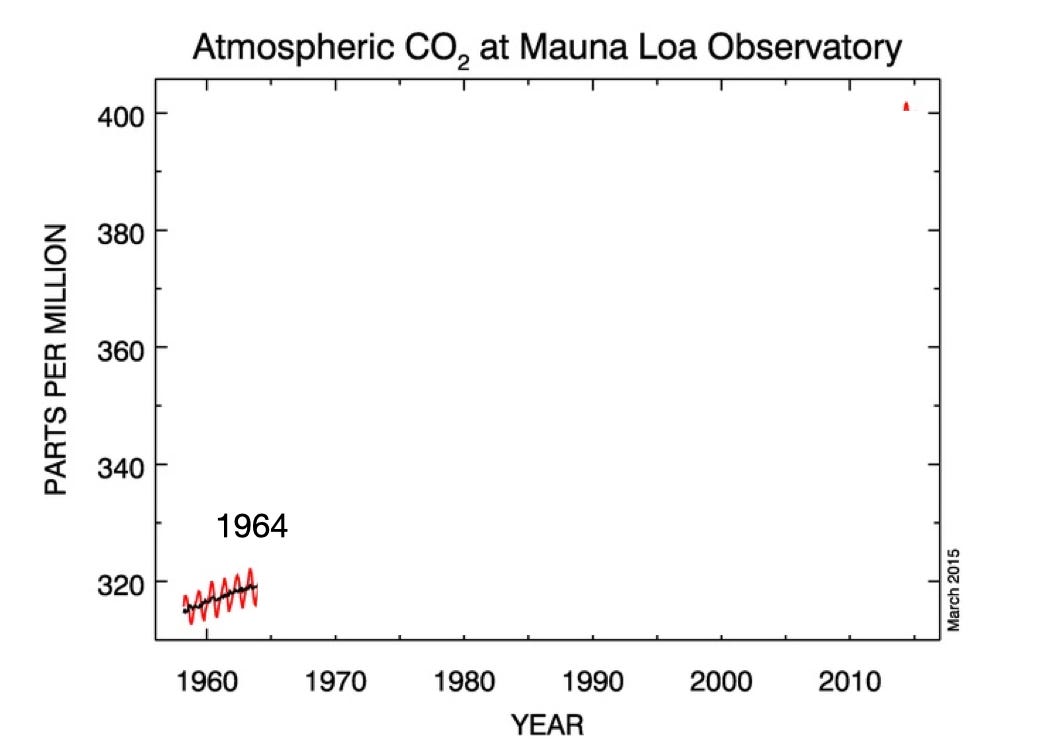
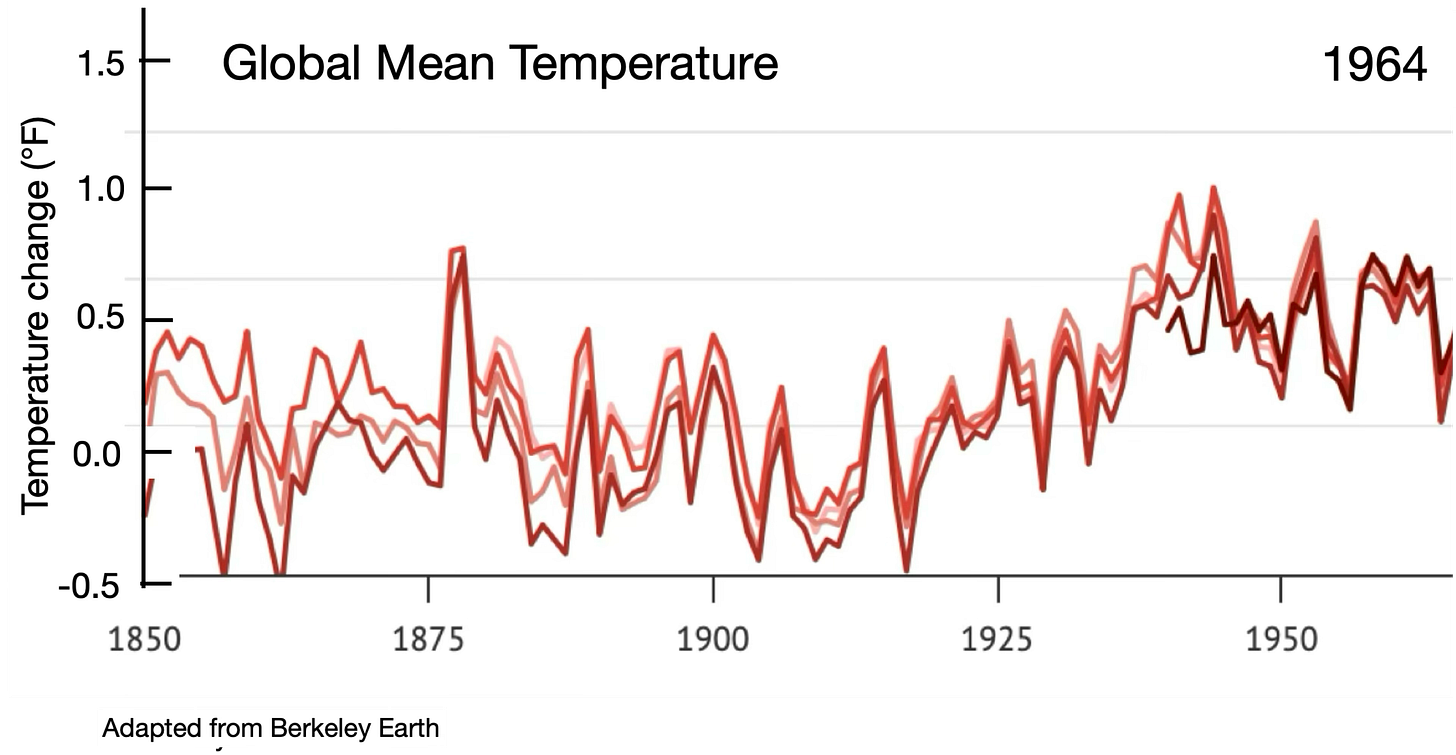

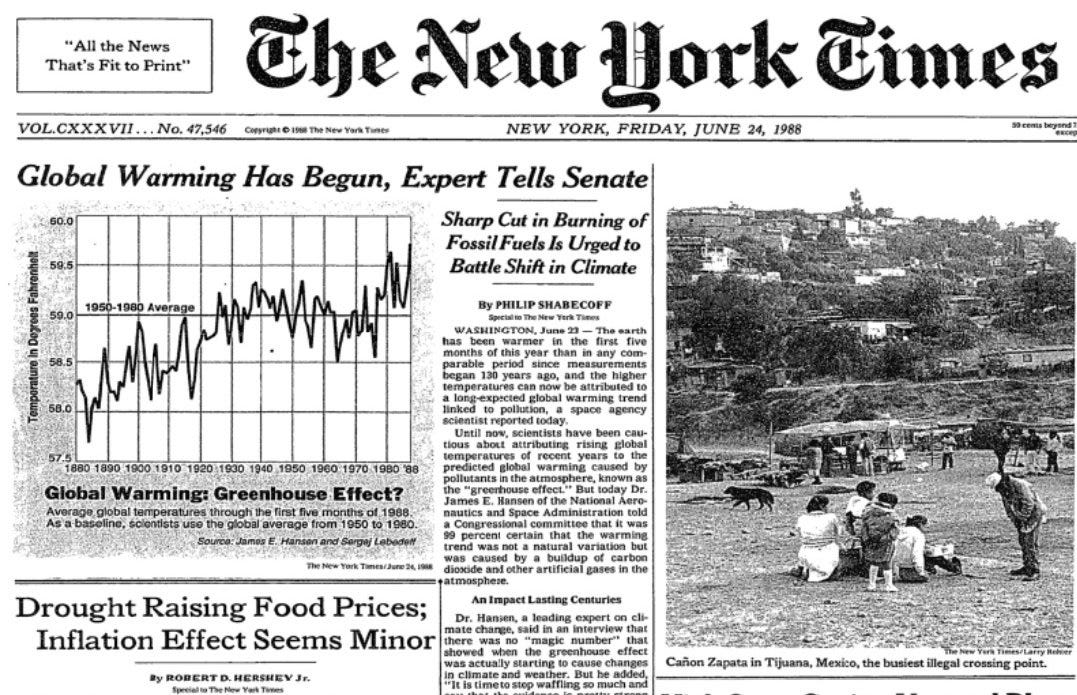
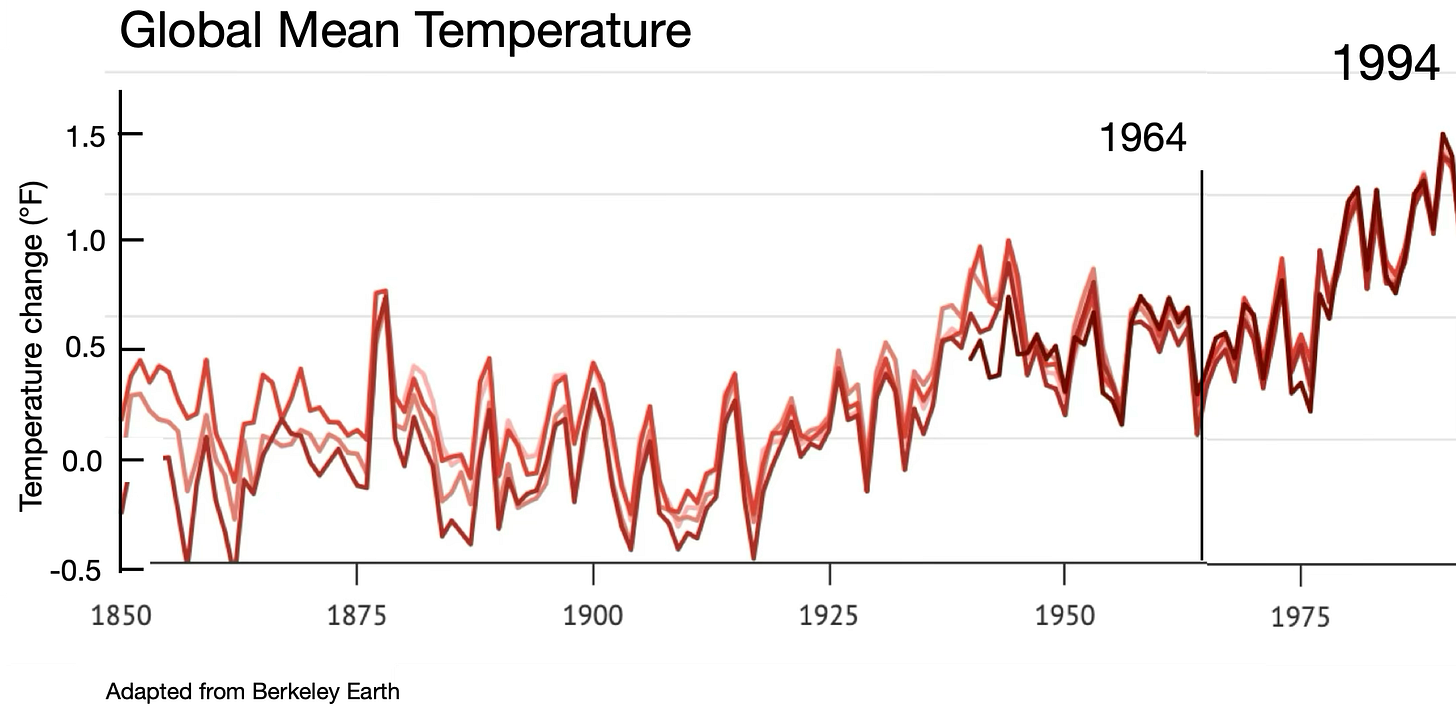
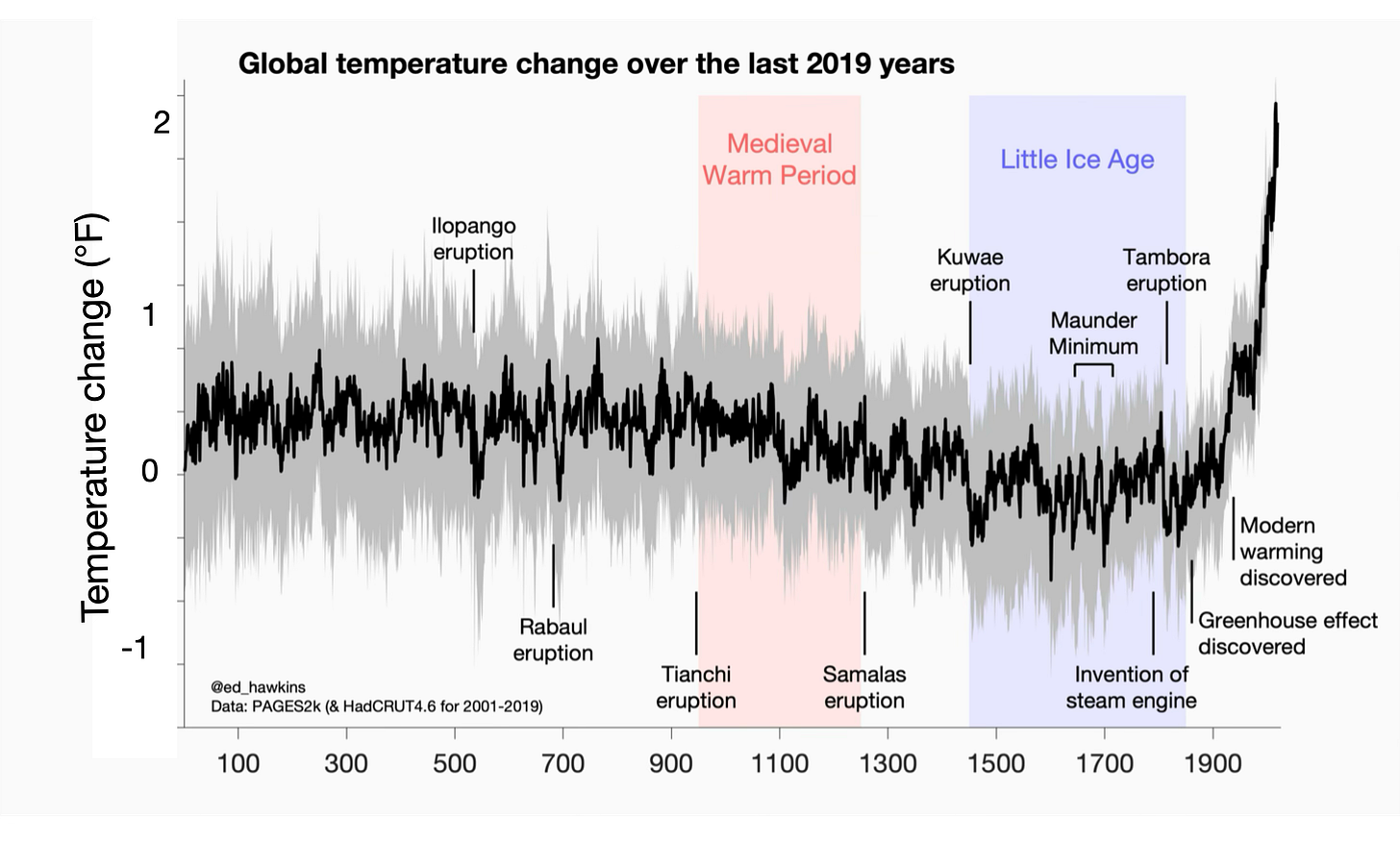

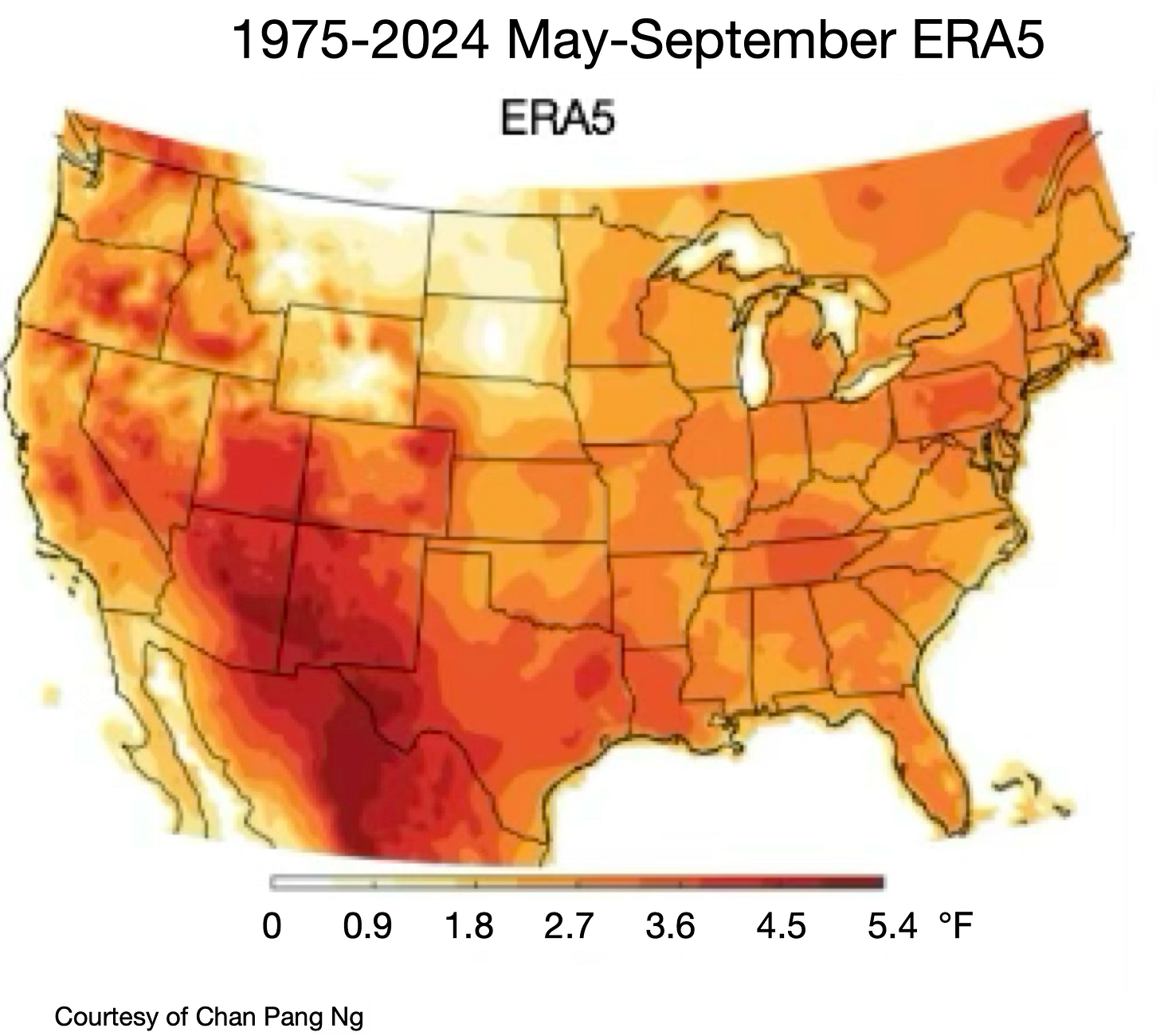
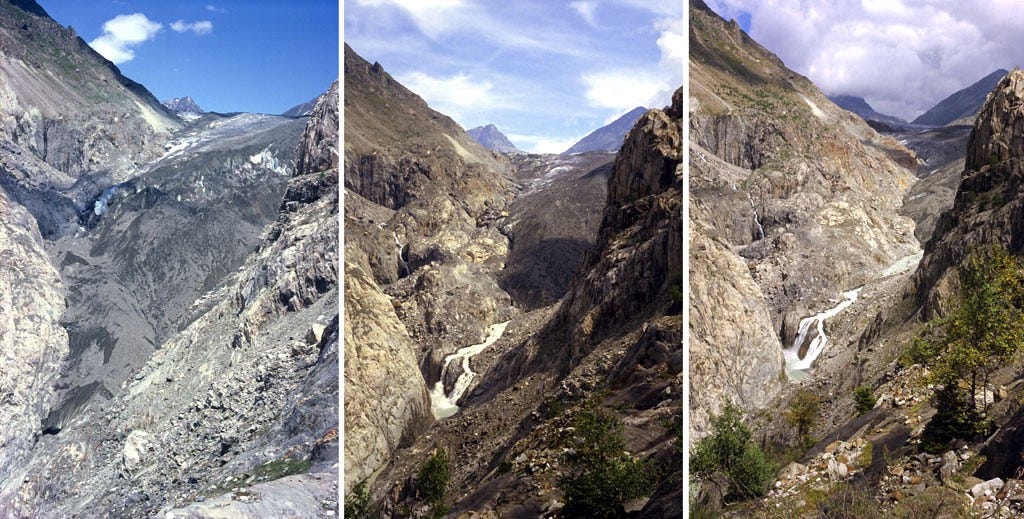



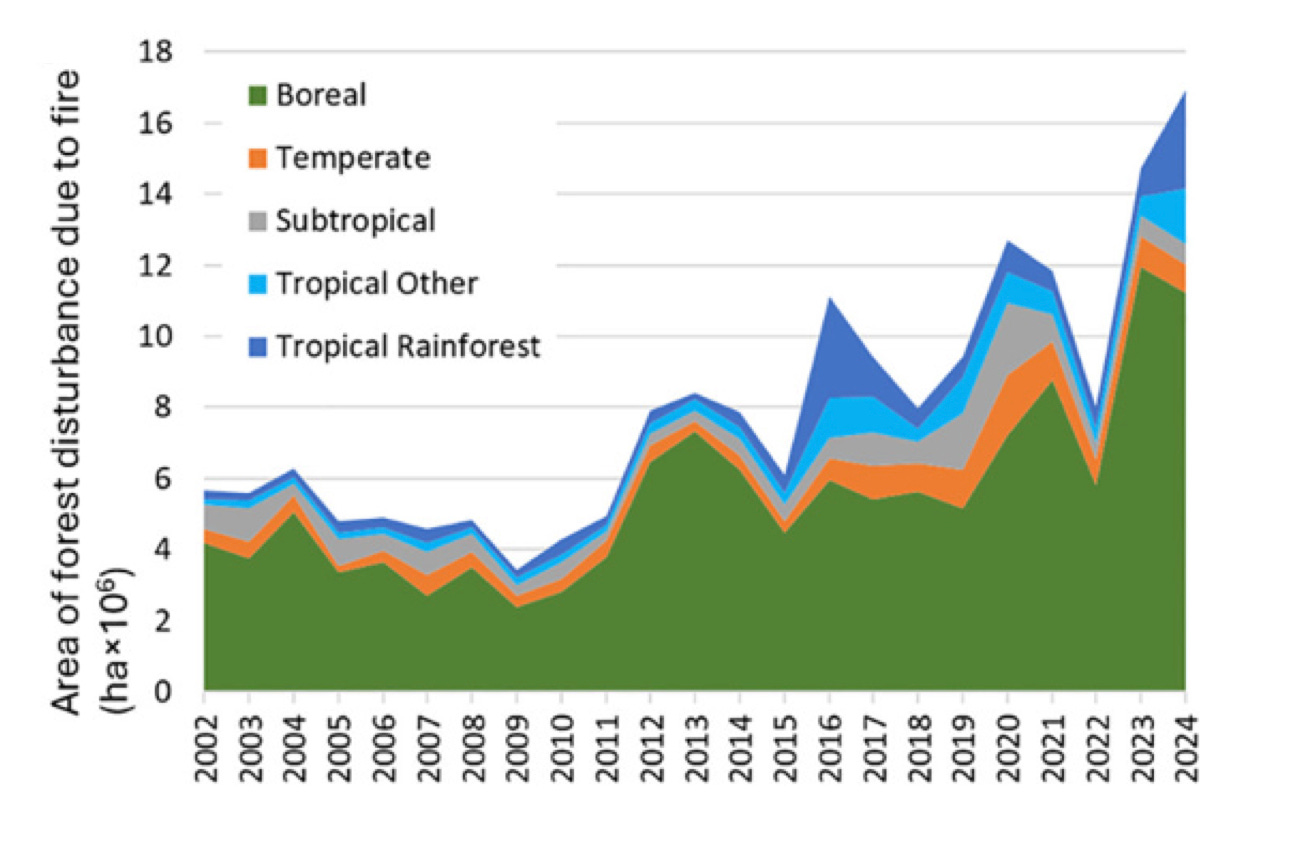
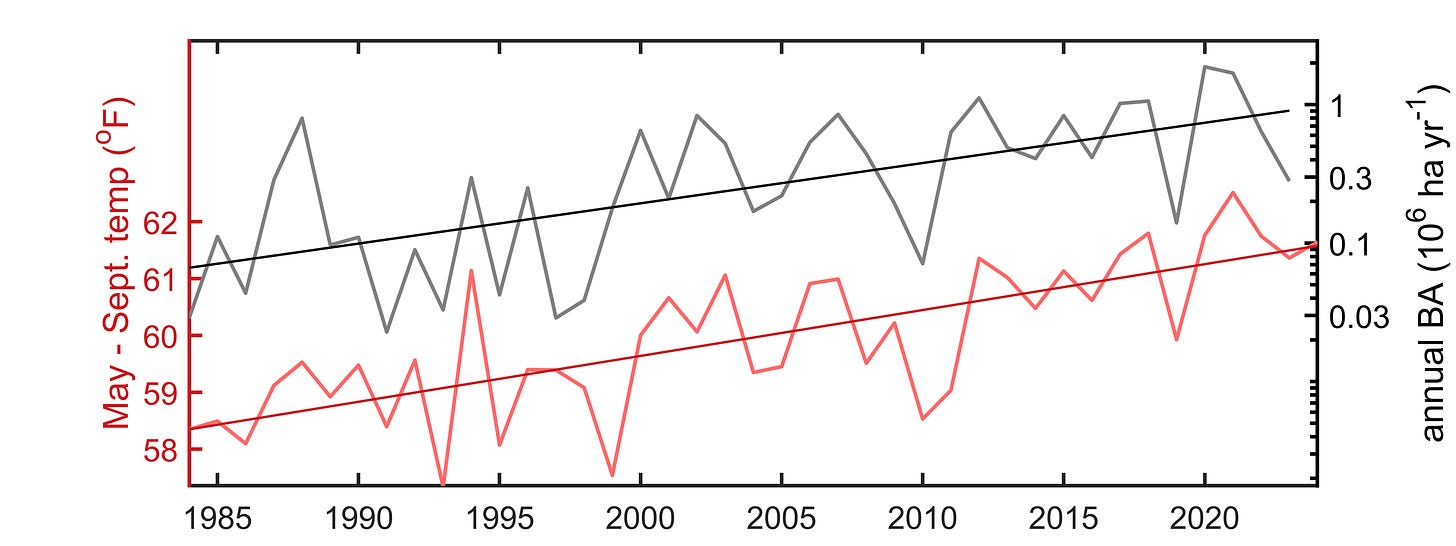
Thanks for the article. I learned a lot.